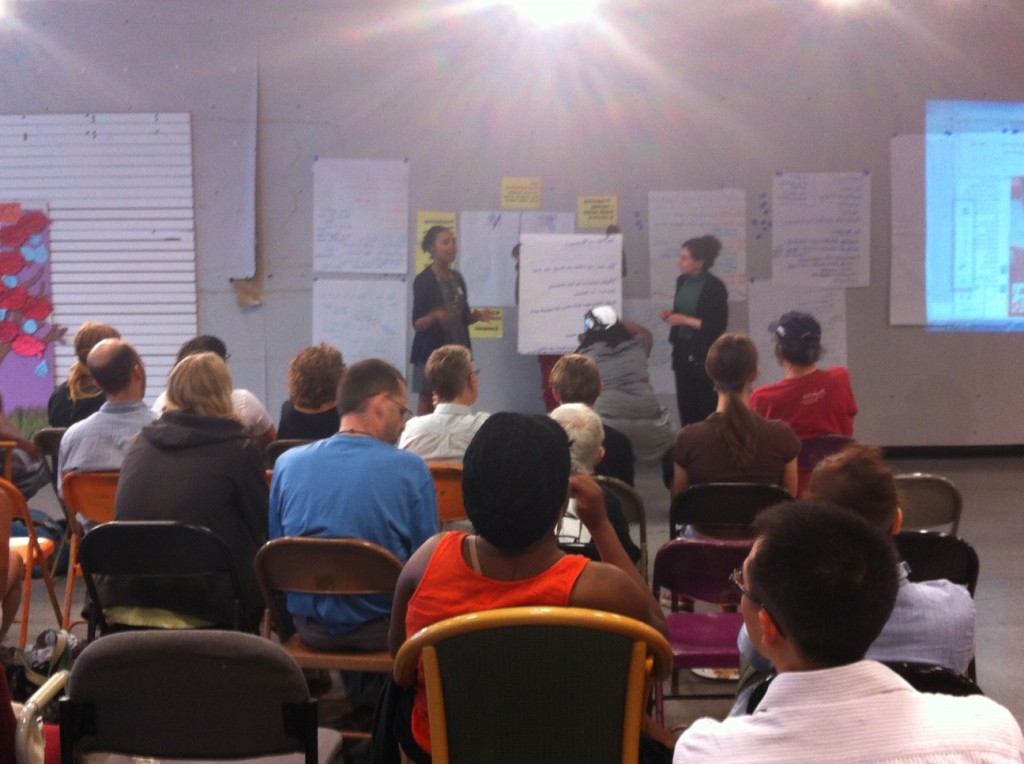
This is part two of a three-part blog series on sustainability and climate change in Boston. Part one of this blog series explains the impact of climate change and importance of sustainability in Boston. This post, part 2 of the series, takes a look at our current GHG trajectory. Part three will cover the advancement of sustainability and climate action to an even greater level in Boston.
We learned in Post 1 that Boston faces two scenarios on climate change:
#1: Commit to a future where Bostonians are more prosperous, citizens are healthier, green businesses are the pride of the city, and our diverse neighborhoods thrive as they both lower their carbon footprint and become prepared for climate change.
#2: Do nothing, and have extreme heat, sea level rise, and intense storms become serious threats to the health and safety of Bostonians and people all over the world.
From 2010 to 2011, Boston’s leading residents, businesses, and institutions took steps to get closer to choice #1 by creating the City’s first comprehensive Climate Action Plan (CAP). The CAP set a goal to make Boston healthier, greener, and more prosperous by cutting our greenhouse gases (GHGs) 25% by 2020 and 80% by 2050. It also mandated that we renew the plan every three years.
Now, three years later, Boston CAP is due for an update. Though 2050 may seem far off into the future, this year is especially important for setting the tone for the next few decades. The 2014 CAP will review our progress since 2011, and present new ways to get us closer to reaching our goals.
Choice 1: Stay unprepared Hurricane Sandy hitting New Jersey. Choice 2: A community park that guards against flooding in Singapore.
New Focuses: Preparedness and Community Engagement on Climate Change
One of the key focuses for this year’s CAP will be preparedness and resilience in the face of climate change. If Hurricane Sandy had hit Boston a few hours earlier at high tide, large portions of Boston’s waterfront would have been underwater. With storms and extreme temperatures becoming increasingly common, we’re exploring our policies and strategies over the next few years in the following categories:
- Infrastructure: how we should plan our energy, road, and transportation systems; how and if a seawall should be built, etc.
- Buildings: how buildings and homes can be made more resilient, by, for example placing backup generators above flood depths, or introducing energy efficient air conditioning to homes across Boston.
- People and Communities: how creating a healthier, more educated, and better-networked community is also necessary for a more resilient population.
The last focal point on engaging people and communities is to do so before this year’s CAP update is even complete. The process of engaging the community will be used as both a means and an end to increasing engagement. In the coming months, through our Greenovate Boston Ambassadors program, we’re looking to partner with Bostonians and local experts to host meet-ups to address crucial questions in each of these categories.
Greenhouse Gas Emissions Are Down – But It’s Going to Get Much Harder to Keep Them Down
Continuing to do Boston’s part in fighting climate change will be just as important as preparedness for the impacts of climate change. Good news: our GHGs are way down. A million metric tons per year down, or “take all the homes in Cambridge off the grid” down.
Bad news: unless we accelerate our efforts, our GHGs are probably not going to go down much from here. Why is that? Growth and fuel switching.
Boston is predicted to create a total of 100,000 new jobs between 2010 and 2020. Since the average Bostonian has a much smaller carbon footprint than most other Americans, those who move to Boston are likely reducing their impact on the environment, while also playing an important role in achieving the city’s broader goals.
But we set aggressive goals in 2005 to reduce our GHGs regardless of any additional people, buildings, or cars on the road. Just to keep pace with all the new cars and buildings, we’ll have to move more urgently to weatherize homes, improve public transit and bike ridership, and help businesses reduce energy use.

A huge chunk of our GHG cuts also came from fuel switching – the replacement of coal and oil in our electricity and heat with natural gas, a much cleaner fuel. But there’s barely any coal or oil to replace with natural gas. If anything, coal and oil use might make a rebound. And to really lower the factor, we’ll need solar or wind to grow their share of power faster than ever before.
So, metaphorically speaking, where we previously had tailwinds, we’ll be seeing headwinds with the pressure of both growth and a potential rise in electricity use to 2020.
Getting to Our 2020 and 2050 Goals
While getting to our 2020 and 2050 goals will be tough, it’s not impossible. There are three minimum requirements:
- The electricity factor has to stay constant or decrease, which means even more renewables and either the same quantity or less of coal and fuel oil.
- Despite 100,000 new jobs, the total number of miles we drive in our cars has to stay the same or decrease a bit.
- The hundred largest businesses and institutions in the area likely account for well over a fifth of our GHG emissions. Getting up to 75,000,000 square feet of our big commercial and institutional partners to make strong commitments to GHG reductions will be critical.
We need YOU to help
In the final post, we’ll cover how you can get involved to make Boston a greener city. For a sneak peak, check out the Greenovate Boston Ambassadors program.
In the meantime, we want to hear from you! Leave your comments in the discussion box below:
- How can we cut our energy use even as Boston continues to grow over the next seven years?
- How do we engage all residents, businesses, and institutions on a perspective on climate action that matters to them?
- How can we prepare for climate change to 2020 and to the end of the century?


Recent Comments